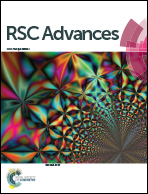Gram-scale synthesis of high-temperature (900 °C) stable anatase TiO2 nanostructures assembled by tunable building subunits for safer lithium ion batteries†
Abstract
Facile gram-scale preparation of anatase TiO2 nanoparticles with tunable subunits from a common precursor was achieved. Noticeably, the as-prepared anatase TiO2 nanoparticles of subunit aggregates are phase-stable even at 900 °C, which is rarely observed. The size of subunits in anatase TiO2 nanoparticles can be easily tuned and dramatically affect their reversible lithium ion storage properties: the larger nanocrystallite size offers lower reversible lithium ion storage capacity where lithium ions storage is limited at the surface and near surface or pseudocapacity. The effect of size of the building subunits in high-order anatase TiO2 nanoparticles was investigated for the first time. When charged at higher current rates (from C/3 up to 1.7 C), a good capacity retention was achieved. After 120 cycles a reversible capacity ∼160 mA h g−1 was still maintained after extensive rate testing. Compared to commercially available P25, dramatically improved capacity, cyclability and rate performance were successfully achieved, which demonstrate these materials to be potentially safer and faster anode materials.


 Please wait while we load your content...
Please wait while we load your content...